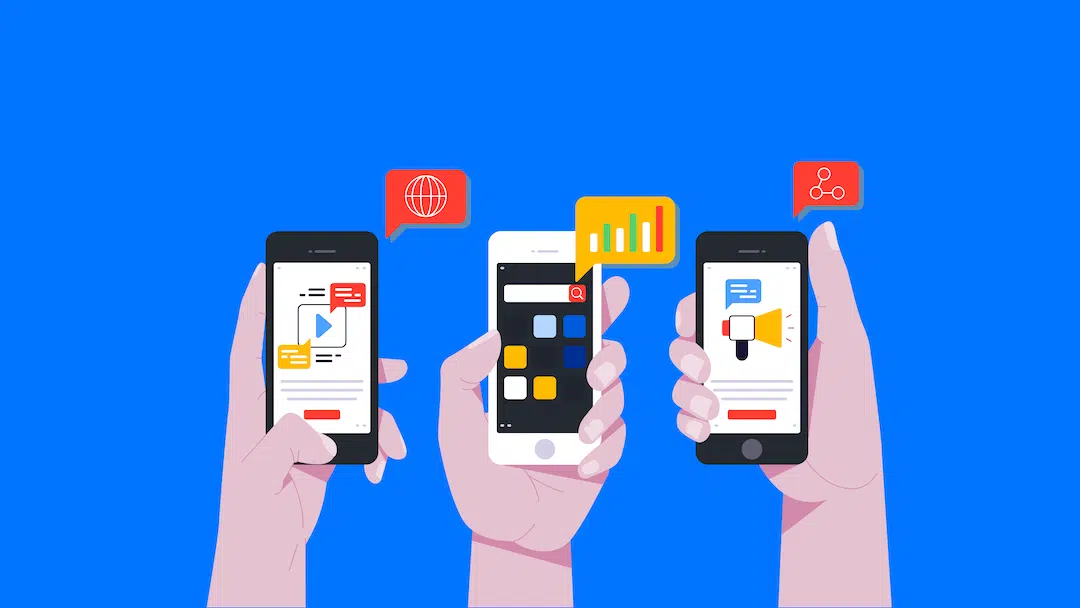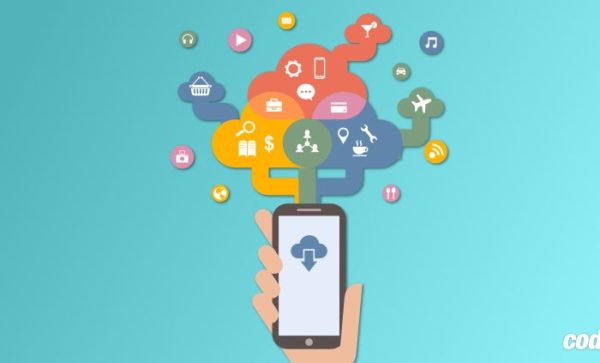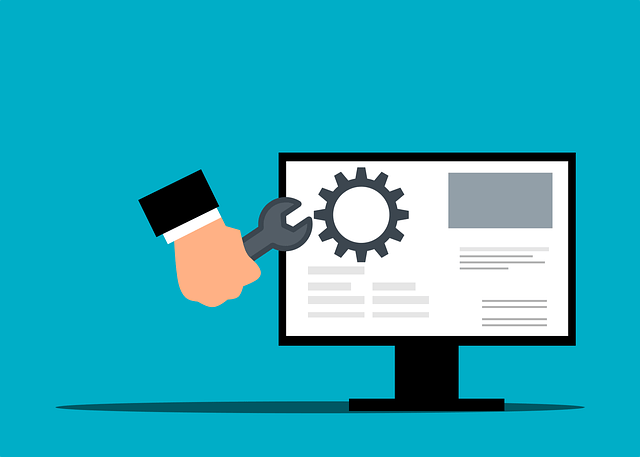
I. Introduction
The landscape of mobile development is evolving at a rapid pace, offering exciting opportunities for businesses while posing new challenges. This constant transformation underscores the crucial importance of staying at the forefront of the latest trends and technologies to remain competitive in the market.
With the proliferation of smartphones and the rapid expansion of applications, mobile development has become the essential driver of user experience. Today's users are more demanding, seeking intuitive, fast, and feature-rich applications. This evolution has propelled the sector to new heights, creating a dynamic and ever-changing environment.
In this context, staying competitive means much more than just keeping up. It involves anticipating changes, actively embracing new technologies, and integrating them judiciously into the mobile development process. Innovation thus becomes the guiding principle, allowing companies to stand out, attract a wider audience, and meet the changing needs of users.
In exploring this blog, let's dive together into the fascinating world of mobile development and discover the new technologies that are redefining the future of the industry. Get ready to uncover valuable insights to not only meet current expectations but also anticipate those of tomorrow.
II. Current Trends in Mobile Development: Embracing Innovation

The field of mobile development is constantly evolving, and understanding current trends is essential to remain competitive. Let's dissect the key trends currently reshaping the industry while exploring practical tips for successful integration.
Intuitive User Interface (UI) and User Experience (UX):
The shift towards intuitive interfaces and immersive user experiences is driven by consumers' growing demand for smooth interactions and user-friendly interfaces. Users expect mobile applications to offer an immersive and intuitive experience from the first contact.
Tip: To remain competitive, it's essential to prioritize simplicity in design while skillfully integrating interactive elements for a smooth and engaging user experience. The goal is to create intuitive navigation that seamlessly guides users through the application while offering an immersive experience that encourages them to return.
Widespread Adoption of Augmented Reality (AR):
Augmented Reality (AR) is emerging as a revolutionary technology, influencing various sectors such as commerce, education, and entertainment.
Tip: Explore the many opportunities offered by AR beyond marketing. For example, integrate 3D product visualization for a more immersive online shopping experience. Also, consider other practical applications such as interactive training, simulation, and virtual prototyping. By adopting a holistic approach to AR, you can leverage its full potential to transform your business and deliver exceptional user experiences. la visualisation de produits en 3D pour une expérience d’achat en ligne plus immersive. Pensez également à d’autres applications pratiques telles que la formation interactive, la simulation et la création de prototypes virtuels. En adoptant une approche holistique de la RA, vous pouvez exploiter son plein potentiel pour transformer votre entreprise et offrir des expériences utilisateur exceptionnelles.
Mobile Development Based on Artificial Intelligence (AI):
The growing integration of artificial intelligence (AI) marks a significant evolution in the technological landscape, offering smarter and more adaptive features in a variety of applications and services.
Tip: To capitalize on this trend, it's crucial to identify specific use cases for AI. For example, in the e-commerce sector, AI can be used to personalize product recommendations based on each user's preferences and purchasing behavior. Similarly, in the financial services sector, automating recurring processes such as risk assessment or fraud detection can be significantly improved through AI. By exploring these specific applications, you can harness the full potential of AI to optimize your business performance, enhance the customer experience, and remain competitive in the ever-evolving market.
Examples of Recent Success:
Let's explore concrete cases where companies have turned these trends into tangible successes.
- The Fitness App that Combines Innovative UI/UX and Intelligent Tracking:
The revolutionary fitness app offers much more than just workout tracking. By combining innovative user interface (UI) and user experience (UX) with intelligent tracking, it transforms the workout experience. Augmented reality features are integrated to guide users during their sessions, helping them stay fit and achieve their goals. Furthermore, thanks to AI algorithms, the app personalizes the experience based on each user's preferences, offering tailored sessions to their needs and fitness level
- The Shopping Experience Revolutionized by Augmented Reality:
In the realm of shopping, augmented reality opens up exciting new possibilities. This revolutionary app allows users to virtually try on clothes before purchasing them, offering a more immersive and convenient shopping experience. 3D models are optimized to ensure a realistic representation of the clothes, helping users make informed purchasing decisions and avoid unwanted returns.
- The Power of AI in a Productivity App:
In the world of productivity, artificial intelligence plays a key role. This app uses AI algorithms to anticipate upcoming tasks and provide proactive suggestions to its users. From task management to scheduling to email management, this app simplifies professional life by making processes more efficient and seamless. A simple and intuitive user interface ensures that users can fully leverage the power of AI without encountering usability issues.
By staying informed about these trends and applying practical advice, developers can not only keep pace with the evolution of mobile development but also play a key role in creating innovative, user-centric applications.
III. Key Technological Advancements in Mobile Development: Embracing Innovation

In-depth Analysis of Emerging Technologies:
Mobile development is evolving towards increasingly innovative horizons through the integration of emerging technologies. Explore with us the depths of three major advancements: Artificial Intelligence (AI), Internet of Things (IoT), and Augmented Reality (AR) and Virtual Reality (VR).
Artificial Intelligence (AI) in Mobile Development:
AI is no longer just a trend; it has become the very foundation of innovation in mobile development, offering unprecedented intelligent features.
Practical Applications of AI:
- Facial Recognition: Secure integration into banking and security applications for seamless authentication processes.
- Natural Language Processing (NLP): NLP propagation in virtual assistants and customer service applications for more human-like interactions.
Concrete Use Cases:
- Enhanced Security: Medical applications use facial recognition to ensure secure access to sensitive patient data.
- Virtual Assistance: Travel apps integrate NLP-powered chatbots to provide personalized information and recommendations.
Practical Tip:
When implementing facial recognition, ensure compliance with privacy and security standards to instill user trust.
Internet of Things (IoT) and Mobile Development:
IoT offers immense potential by connecting physical devices to mobile applications, paving the way for new user experiences.
Integration of IoT into Mobile Applications:
- Sensors and Data Collection: Weather apps leverage IoT sensors to provide real-time accurate forecasts.
- Remote Control: Smart home apps allow remote control of lighting, temperature, and security.
Examples of IoT Devices Connected via Mobile Applications:
- Smart Homes: Connected apps allow users to monitor and regulate the home environment from anywhere.
- Wearables: Wearable devices transmit real-time health data to mobile applications, offering personalized tracking.
Practical Tip:
Ensure that IoT applications are energy-efficient to optimize the battery life of connected devices.
Augmented Reality (AR) and Virtual Reality (VR) in Mobile Development:
AR and VR transcend the user experience, creating innovative opportunities in various sectors.
Impacts on User Experience:
- AR for Visualization: Interior decoration apps allow users to visualize virtual furniture in their own space.
- VR for Total Immersion: Training apps use VR to simulate real environments.
Practical Applications in Various Sectors:
- Virtual Training: The healthcare and education sectors use VR for realistic simulations, enhancing learning.
- Online Commerce: AR transforms the shopping experience by allowing users to virtually try on products.
Practical Tip:
Optimize the performance of AR/VR applications by minimizing latency for a smooth user experience.
By adopting these technological advancements, developers can design mobile applications that are not only cutting-edge but also tailored to specific user needs, significantly improving the mobile experience.
IV. How to Integrate these Technologies into Mobile Development: A Practical Guide for Developers

The ever-evolving world of mobile development demands a strategic approach when integrating emerging technologies. Here's a practical guide, refined through years of experience, to help developers succeed in this complex transition.
Selecting the Right Frameworks and Tools for Mobile Development:
- Assessing Project Needs:
- Before diving into framework selection, conduct a thorough analysis of the project's specific requirements.
- Consider platform-specific functionalities as well as potential future needs.
- Multiplatform Compatibility and Consistent User Experience:
- Opt for frameworks that ensure a consistent experience across different platforms.
- Ensure that multiplatform compatibility does not compromise the quality of the user experience.
- Active Community and Frequent Updates:
- Choose frameworks supported by an active community.
- Frequent updates reflect the ongoing health and robustness of the framework.
Performance and Optimization Considerations:
- Media Optimization for a Fast Experience:
- Intelligently compress media to balance visual quality and loading times.
- Adopt powerful libraries to manipulate media efficiently.
- Rigorous Memory Management:
- Constantly monitor memory usage to avoid leaks.
- Use profiling tools to identify and fix bottlenecks.
- Rigorous Testing and Continuous Readjustments:
- Integrate performance testing at every stage of development.
- Make sure you have an agile process that allows for rapid readjustments based on test results.
- Intelligent Caching and Clever Preloading:
- Implement caching strategies to minimize load times.
- Explore strategic data preloading, especially for frequently used features.
Practical Tips for Harmonious Integration:
- Continuing Training and Technological Watch:
- Prioritize ongoing team training on the latest technologies.
- Set up a technology monitoring routine to anticipate future developments.
- Transparent collaboration between Developers and Designers:
- Encourage open communication between developers and designers from the initial phases of the project.
- Ensure that implementations accurately reflect the designers' creative vision.
- Post-Launch Analysis and Iteration:
- After launch, perform a thorough post-mortem analysis.
- Use this information to constantly iterate and improve future projects.
Successful integration of these technologies requires a holistic approach, combining technical skills and sensitivity to user needs. By following these tips, developers can turn the innovation challenge into an opportunity for high-quality mobile apps.
V. Future Opportunities and Challenges to Overcome in Mobile Development: Navigating the Future with Forethought

The world of mobile development unveils emerging opportunities that promise to redefine how we interact with applications. Explore these strategic opportunities and practical advice to seize them successfully.
- Extended Reality (XR):
- Opportunity: Incorporating Augmented Reality (AR) and Virtual Reality (VR) offers immersive and engaging user experiences.
- Advice: Explore XR applications in the professional training sector, where realistic simulation can enhance practical learning.
- 5G and Internet of Things (IoT):
- Opportunity: 5G accelerates communications, enabling instant connectivity for IoT applications.
- Advice: Develop IoT applications leveraging 5G for areas such as remote health monitoring and smart cities.
- Applied Artificial Intelligence (AI):
- Opportunity: Beyond chatbots, AI offers possibilities in intelligent predictions and automation.
- Advice: Integrate AI algorithms to personalize user experiences, providing smart suggestions based on past behaviors.
Identifying Potential Challenges Associated with Adopting New Technologies.
- Security and Privacy:
- Challenge: Technologies like facial recognition raise concerns.
- Strategy: Adopt advanced security protocols, including clear consent options and full transparency on data usage.
- Technological Complexity:
- Challenge: Integrating multiple technologies can become complex.
- Strategy: Prioritize scalability and adopt a modular approach to facilitate the addition and updating of features.
- User Adoption:
- Challenge: Users may resist changes.
- Strategy: Provide a seamless user experience, ensure that benefits are evident, and facilitate the transition through intuitive guides.
- Initial Costs and Maintenance:
- Challenge: Adopting new technologies may require investments.
- Strategy: Carefully evaluate initial costs versus long-term benefits, focusing on maintenance planning and continuous optimization.
By integrating these opportunities and overcoming these challenges, companies can position their mobile applications as pioneers of innovation. The key lies in a strategic approach, a deep understanding of user needs, and flexibility to adapt to the constantly evolving landscape of mobile development.


